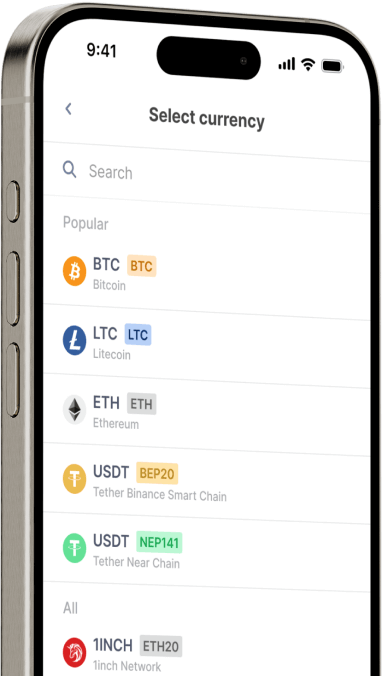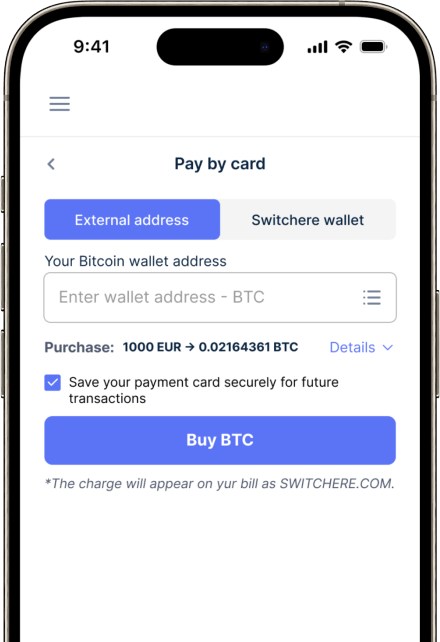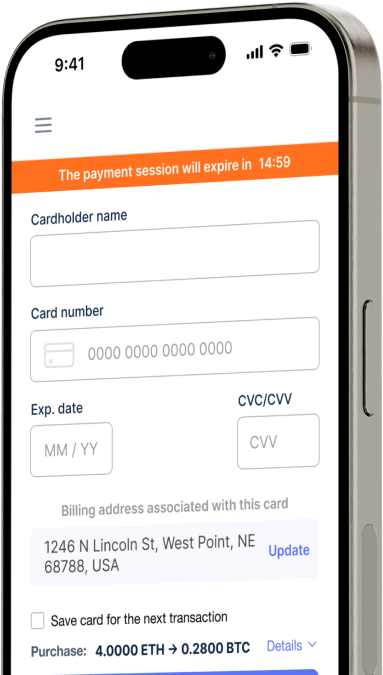Converteer
Romanian Leu (RON) naar Chromia (CHR) direct
Koop Chromia (CHR) met Romanian Leu (RON) gemakkelijk bij Switchere en profiteer van snelle, veilige transacties.
Over
Chromia (CHR)
Chromia (CHR) is een relationeel blockchainplatform dat is ontworpen om een nieuwe generatie gedecentraliseerde applicaties (dApps) mogelijk te maken door de uitdagingen op het gebied van schaalbaarheid, dataverwerking en ontwikkelaarservaring aan te pakken die in eerdere blockchain-infrastructuren veel voorkwamen. In tegenstelling tot traditionele smart contract-platforms die een virtuele machine gebruiken, integreert Chromia de beveiliging van een blockchain met de flexibiliteit en efficiëntie van een relationele database. Deze unieke architectuur, gebouwd op het Postchain-framework, maakt het mogelijk om complexere datastructuren en queries direct on-chain te beheren, waardoor het een zeer geschikte Web3-infrastructuur is voor data-intensieve applicaties zoals bedrijfssystemen, sociale media en geavanceerde games.
De kern van Chromia's innovatie ligt in zijn aangepaste programmeertaal, Rell, die is ontworpen om zeer veilig en gemakkelijk te leren te zijn voor ontwikkelaars die bekend zijn met SQL. Deze focus op een ontwikkelaarsvriendelijke omgeving is bedoeld om de creatie van geavanceerde dApps te versnellen. Het netwerk werkt op een Byzantine Fault Tolerance (BFT) consensusmechanisme, waarbij dApps op hun eigen toegewijde sidechains draaien, wat een hoge doorvoer en lage latentie garandeert. De native utility token, CHR, staat centraal in de tokenomics van het ecosysteem. Het wordt door dApps gebruikt om hostingkosten te betalen, wordt gestaked door node-providers om de veiligheid te garanderen en fungeert als een standaardvaluta binnen de digitale activaeconomie van Chromia.
Koop andere 150+ cryptocurrencies voor Romanian Leu (RON)
Andere munten voor Romanian Leu (RON)
-
RON naar ZRX
-
RON naar 1INCH
-
RON naar AAVE
-
RON naar ACH
-
RON naar ALGO
-
RON naar TLM
-
RON naar ANKR
-
RON naar APE
-
RON naar NFT
-
RON naar API3
-
RON naar APT
-
RON naar ARPA
-
RON naar AUDIO
-
RON naar AVAX
-
RON naar AVAX
-
RON naar AXS
-
RON naar BADGER
-
RON naar BAL
-
RON naar BNT
-
RON naar BAT
-
RON naar BNB
-
RON naar BSW
-
RON naar BSV
-
RON naar BLUR
-
RON naar BONE
-
RON naar CTSI
-
RON naar CELR
-
RON naar CELO
-
RON naar CEL
-
RON naar LINK
-
RON naar CHZ
-
RON naar CHR
-
RON naar C98
-
RON naar COMP
-
RON naar CFX
-
RON naar PEOPLE
-
RON naar CVX
-
RON naar ATOM
-
RON naar CTC
-
RON naar CRV
-
RON naar DAI
-
RON naar DASH
-
RON naar MANA
-
RON naar DENT
-
RON naar DGB
-
RON naar DYDX
-
RON naar XEC
-
RON naar EOS
-
RON naar ETC
-
RON naar ENS
-
RON naar ETHW
-
RON naar FET
-
RON naar FIL
-
RON naar FLOKI
-
RON naar GALA
-
RON naar GNO
-
RON naar ONE
-
RON naar HBAR
-
RON naar HOT
-
RON naar HOOK
-
RON naar ICX
-
RON naar ILV
-
RON naar IMX
-
RON naar INJ
-
RON naar ICP
-
RON naar IOST
-
RON naar IOTX
-
RON naar JASMY
-
RON naar JST
-
RON naar KAVA
-
RON naar KCS
-
RON naar KSM
-
RON naar KNC
-
RON naar LDO
-
RON naar LQTY
-
RON naar LPT
-
RON naar LOOKS
-
RON naar LRC
-
RON naar LUNA
-
RON naar MKR
-
RON naar MASK
-
RON naar EGLD
-
RON naar ALICE
-
RON naar NEAR
-
RON naar XEM
-
RON naar NEXO
-
RON naar NOT
-
RON naar NMR
-
RON naar OKB
-
RON naar OMG
-
RON naar ONT
-
RON naar EDU
-
RON naar OP
-
RON naar OGN
-
RON naar CAKE
-
RON naar PAXG
-
RON naar PENDLE
-
RON naar DOT
-
RON naar POL
-
RON naar QTUM
-
RON naar QNT
-
RON naar RDNT
-
RON naar XRD
-
RON naar RVN
-
RON naar REN
-
RON naar RSR
-
RON naar RLC
-
RON naar RPL
-
RON naar SFP
-
RON naar SHIB
-
RON naar SKL
-
RON naar SXP
-
RON naar STND
-
RON naar STG
-
RON naar XLM
-
RON naar GMT
-
RON naar STORJ
-
RON naar STMX
-
RON naar SUSHI
-
RON naar SNX
-
RON naar USDT (Polygon)
-
RON naar USDT (AVAC)
-
RON naar USDT (BEP20)
-
RON naar USDT (ERC20)
-
RON naar USDT (SPL)
-
RON naar USDT (NEP141)
-
RON naar USDT (FA2)
-
RON naar USDT (TRC20)
-
RON naar USDT (JETTON)
-
RON naar XTZ
-
RON naar GRT
-
RON naar SAND
-
RON naar TFUEL
-
RON naar THETA
-
RON naar RUNE
-
RON naar TON
-
RON naar TUSD (BEP20)
-
RON naar TUSD (TRC20)
-
RON naar TWT
-
RON naar UOS
-
RON naar UMA
-
RON naar UNI
-
RON naar USDC (Polygon)
-
RON naar USDC (SPL)
-
RON naar USDC (OP)
-
RON naar USDC (BEP20)
-
RON naar USDC (AVAC)
-
RON naar USDC (ARB)
-
RON naar USDC (ERC20)
-
RON naar VET
-
RON naar VRA
-
RON naar WAXP
-
RON naar WOO
-
RON naar WLD
-
RON naar WBTC
-
RON naar WMINIMA
-
RON naar XDC
-
RON naar YFI
-
RON naar YGG
-
RON naar ZIL
Hoe Chromia (CHR) kopen
Veelgestelde vragen
-
Wat vertegenwoordigt het RON/CHR-handelspaar in de markt voor digitale activa?
Het RON/CHR-paar duidt op een directe uitwisseling tussen Ronin (RON), de native token van het Ronin Network, een op gaming gerichte blockchain, en Chromia (CHR), de token voor een relationeel blockchainplatform ontworpen voor dApps. Het verhandelen van dit paar omvat het omwisselen van de utility-token van het Axie Infinity-ecosysteem voor een token die een platform aandrijft dat is gebouwd met de Rell-programmeertaal voor schaalbare gedecentraliseerde applicaties.
-
Welke technische factoren moet ik overwegen bij het verhandelen van RON voor CHR?
Belangrijke technische factoren zijn onder meer netwerkkosten en transactiesnelheden op zowel het Ronin- als het Ethereum-netwerk. Houd bij het gebruik van een DEX rekening met slippage-tolerantie, wat cruciaal is voor paren met wisselende liquiditeit. Let ook op de compatibiliteit van wallets; je hebt een Ronin Wallet nodig voor RON en waarschijnlijk een EVM-compatibele wallet zoals MetaMask voor CHR. Als je activa overbrugt, houd dan rekening met de veiligheid en de kosten van de specifieke gebruikte blockchain-brug.
-
Wat voor soort digitale portefeuilles zijn nodig om zowel RON- als CHR-tokens veilig te bewaren?
Om beide activa veilig te beheren, heeft u twee soorten wallets nodig. Voor RON is een native Ronin Wallet vereist, omdat deze specifiek is ontworpen voor de Delegated Proof of Stake (DPoS)-architectuur van het Ronin Network. Voor CHR, een ERC-20-token op de Ethereum-blockchain, heeft u een EVM-compatibele wallet nodig zoals MetaMask, Trust Wallet, of een hardware wallet zoals Ledger voor verhoogde veiligheid. Zorg er altijd voor dat u interactie heeft met het juiste netwerk voor elk activum.
-
Wat zijn de gebruikelijke platforms voor het uitvoeren van een RON naar CHR token swap?
Een RON naar CHR token swap kan doorgaans worden uitgevoerd op gecentraliseerde beurzen (CEX's) die beide digitale activa aanbieden. Op deze platforms gebruik je het orderboek om te handelen. Als alternatief kan het een meerstappenproces via een gedecentraliseerde beurs (DEX) inhouden, wat kan vereisen dat RON van het Ronin Network wordt overbrugd naar een meer interoperabele keten zoals Ethereum, waar CHR (een ERC-20 token) wijd beschikbaar is in liquiditeitspools.
-
Vanuit een strategisch perspectief, waarom zou een investeerder RON voor CHR willen ruilen?
Een investeerder kan RON voor CHR ruilen om zijn digitale activaportefeuille te diversifiëren van een op gaming gericht ecosysteem (Ronin) naar een fundamenteel Layer-1-protocol (Chromia) dat zich richt op bedrijfs- en algemene dApp-ontwikkeling. Deze stap kan gebaseerd zijn op een geloof in de relationele blockchain-architectuur van Chromia en zijn Postchain-framework, en zoekt blootstelling aan het potentieel voor het creëren van complexe, data-intensieve gedecentraliseerde applicaties buiten de gamingsector.
-
Hoe beïnvloedt de liquiditeit van het RON/CHR-paar de uitvoering van een transactie?
De liquiditeit van het RON/CHR-paar—dat wil zeggen, het volume van koop- en verkooporders in het orderboek of de activa in een liquiditeitspool—beïnvloedt direct de uitvoering van de transactie. Hoge liquiditeit resulteert in minimale slippage, wat betekent dat de prijs waartegen u uitvoert dicht bij de verwachte prijs ligt. Lage liquiditeit kan leiden tot aanzienlijke slippage, vooral bij grote orders, en bredere bied-laatspreads, waardoor de transactie duurder wordt. Het is cruciaal om het handelsvolume en de diepte van het orderboek te controleren voordat u een aanzienlijke swap uitvoert.




